The Bagpipe Society
The Belarusian or Lithuanian Duda
The Dudá belongs to the national cultural heritage of Belarus and it takes a notable place among the other bagpipes of Europe.
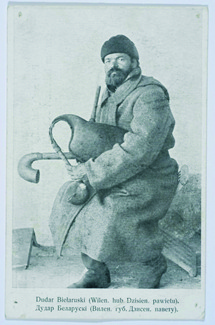
It has a long history, which goes back in time to the period of Grand Duchy of Lithuania, Ruthenia and Samogitia. The territory of that former Eastern European state, along with its political situation, shaped the area where this musical instrument was spread. There is ample written evidence of its existence on the territory of the modern states of Belarus and Lithuania. The first reliable sources mentioning the Duda are the old Belarusian chronicles from the 16th century. Remaining on hand as museum exhibits are also some old photographs of Belarusian pipers (Dudárs) covering the period from the end of the 19th to the beginning of the 20th century and also the instruments themselves. Preserved are also ethnographic audio recordings made in the beginning of the 20th century.
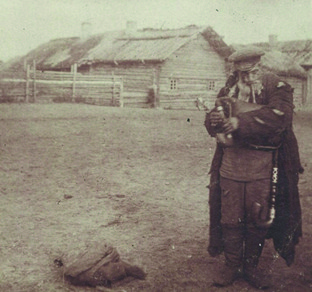
Characteristics of different types of Duda and the way they were used along with descriptions of their parts, scales and keys were given by outstanding enthusiasts such as N. Nikiforovskiy and E. Romanov. Apart from Belarusian authors, there is further evidence of the Duda. In his book “Bagpipes” - published in 1960 Anthony Baines gave a short description of the Belarusian / Lithuanian bagpipes. He even included drawing of the Duda’s parts (a chanter and drone).
The Duda was used in Northern and Central Belarus, in the western part of Smolensk Region (in the west of Russia), in South-Eastern Lithuania and also in Southern Latvia. The Duda was a popular and commonly used musical instrument. A person playing it was referred to as a “Dudár” (derived from Dudá). The Duda accompanied people’s lives and was played at the most crucial moments: weddings, seasonal rites and festivities or holidays could scarcely take place without Dudars . It was played either as part of a musical group with other musical instruments or solo, duo or within a band of pipers. People also used to sing and dance to the Duda music. Belarusian pipers were quite professional and had a vast repertoire of their own. Among the most popular folk hits of that time were “Барыня”, “Мяцелiца”, “Лявоніха”, “Казачок” and others, which can still be heard today.
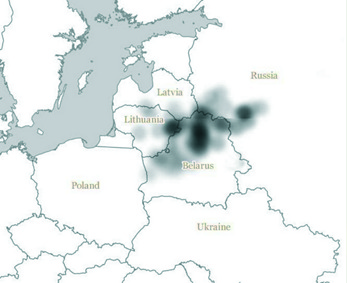
Thanks to its unique appearance, the Duda is easily recognizable among the bagpipes of other peoples of the world. Not common knowledge, though, is the fact that there used to be several kinds of bagpipe within Belarus i.e. with one, two, three or more drones. But the most common kinds were and still remain two types: the single-droned Dud· and the multiple-droned Matsi·nka (a less popular one).
The Duda consists of a sewn bag (Meh) which looks like a goose with a long neck, with the chanter (Perabor) at the front end, a drone (Ghook) at the back and a blowpipe (Soska) on top. On the ends of the ghook and the perabor there are wooden bells (Ragovn ) which are directed upwards. When playing, a Dudar holds the perabor in front of himself the ghook is either hanging loose behind or is placed resting on the forearm.
The Matsianka also has a sewn leather bag, a chanter, a blowpipe and several drones, which are fitted into a common stock (Perahadnik) and usually hang loose. The Perabor and ghooks have no bells. Both Duda and Matsianka have cylindrical borechannels, single reeds and a pleasant sound which is not too loud. As a rule, these two types have a practically identical diatonic scale. The Perabor has a range of an octave or nona. At present, duda-makers provide the potential for playing major or minor scales by cutting extra finger holes.
There are surviving historical musical transcriptions of the scale and tunes of a Dudar called G. Slavchik, made by E. Gyppius and Z. Evald in a place called Garadok in the Vitebsk region of Belarus in 1931. The interval Region, Belarus, 1928 between the chanter and drone’s tone equaled to duodecimo. Closed fingering was used. A similar scale is still used today.
There survives a film clip with two Dudar (a fragment of the film “The Soviet Art”) shot in Garadok region, Belarus, in 1939. http://tinyurl.com/zdjlego
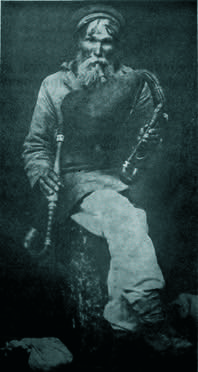

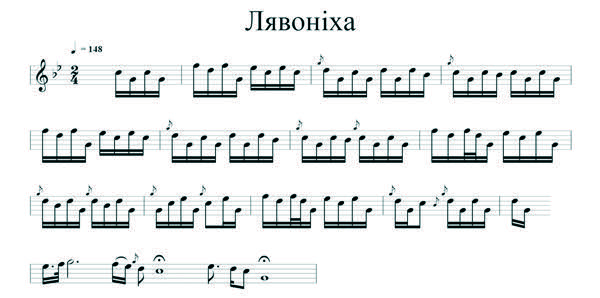
Belarusian dudamakers used to decorate the Duda with tin or silver incrustation work, thereby demonstrating their approach to the instrument as an object of art. Such instruments were kept as a very valuable possession and passed from generation to generation.
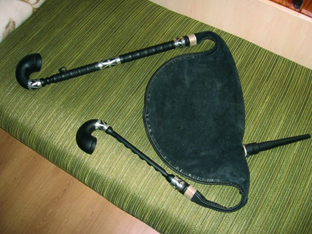
In the 19th century the Duda was one of the main musical instruments used in traditional folklore music of Belarus. But later on, as the fiddle and accordion appeared, the Duda was pushed aside. After the Second World War the instrument practically fell out of use. To see someone playing a Duda became a rare occasion. Fortunately, this deplorable situation did not last long and, by the end of the 20th century, the Duda’s popularity had soared. New skilful makers producing Belarusian bagpipes emerged. Thus the tradition of Belarusian Duda was not forgotten. Now playing the Duda is very popular in Belarus. You can come across a person playing a Duda not only in Belarus or Lithuania, but now also in some other countries of the world. 24
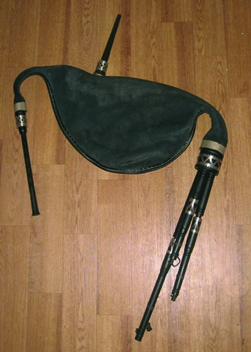
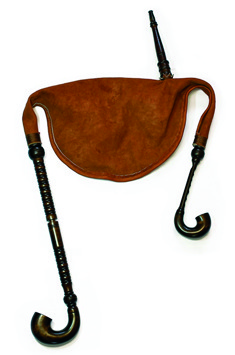
Find out more about Alexander Khudolev’s bagpipes at http://axbagpipe.com/
From Chanter Summer 2016.
- Data Processing Notice (GDPR)
@BagpipeSociety on X (formally known as Twitter)
TheBagpipeSociety on Instagram
 BagpipeSociety on Facebook
BagpipeSociety on Facebook
Something wrong or missing from this page? Let us know!
